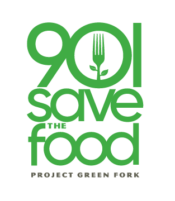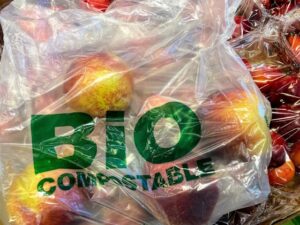A dish that doesn’t sell, a portion too large for the average diner, or an over-order of ingredients – these scenarios are all too familiar for the restaurant industry. Unfortunately, this contributes to an overwhelming amount of food waste. In fact, in 2023 alone, restaurants and food service businesses across the U.S. generated 12.7 million tons of surplus food. Of that, 69.6% came from plate waste, perfectly good food left uneaten by customers.
In Memphis, an estimated 22% of food waste comes from restaurants and catering businesses. The numbers are daunting, but they also highlight an opportunity to reduce food waste, cut costs, improve sustainability, and help fight food insecurity in the community. Here’s a closer look at why food waste happens in restaurants – and what we can do to tackle it.
Where does restaurant food waste come from?
Understanding the biggest sources of food waste in restaurants is key to finding effective solutions. One of the primary causes in restaurants is plate waste, when portions are too large for customers to finish or when customers simply don’t eat all the food on their plate.
Additionally, new medical trends may also be contributing to a decrease in consumers’ appetites. This makes offering appropriately sized portions even more essential to avoid excessive food waste and costs.
Another significant contributor is overproduction. Restaurants frequently prepare more food than they actually sell in a given day, leading to wasted ingredients and prepared meals. This is also common for catering and large-scale events, where large amounts of leftover food are often discarded.
While some waste is inevitable, restaurants and caterers have several strategies at their disposal, benefiting both their bottom line and the environment.
Smart solutions to cut restaurant food waste
1. Rethink portion sizes
One of the easiest ways to reduce plate waste is by offering smaller portion sizes. This doesn’t mean short-changing customers – it means giving them options. Consider:
- Offering half portions or small plates on the menu.
- Using customer feedback to adjust portion sizes on popular dishes.
- Providing more flexibility with side dishes.
By giving customers more control over their meal size, restaurants can lower the amount of uneaten food that gets thrown away.
2. Upgrade inventory management
Over-ordering ingredients leads to spoilage and unnecessary waste. Restaurants can cut down on this by tracking purchasing patterns to better predict demand, using a first-in, first-out approach to ensure older ingredients are used before newer ones, and lessening bulk orders for perishable items. With better inventory tracking, restaurants can prevent excess food from going unused.
3. Find innovative ways to use surplus ingredients
Instead of throwing out surplus ingredients, restaurants can repurpose them in daily specials, soups, or even cocktails. For example:
- Overripe fruits can be used in smoothies or desserts.
- Vegetable scraps can be turned into stock for soups and sauces.
- Stale bread can be repurposed into croutons or bread pudding.
- Citrus rinds can be used to garnish a cocktail.
A little creativity can go a long way in cutting down unnecessary waste.
4. Partner with a food rescue organization
When surplus food is still safe to eat but can’t be sold, donation is a powerful solution. Many restaurants don’t donate simply because they don’t know how, but apps like Careit make the process simple, legal, and seamless. For restaurants looking to lower waste while giving back, food donation is a win-win.
Get in touch with Project Green Fork’s Food Rescue Coordinator, Heidi Rupke, to learn more.
5. Train staff on waste reduction
Employees play a huge role in how much food gets wasted, so engaging them in the solution is essential. Restaurants can train kitchen staff on correct portioning and storage to minimize waste before food reaches the customer. Additionally, waitstaff can play a role by checking portion preferences with customers, preventing excessive plating.
Furthermore, implementing a food waste tracking system can help identify areas for improvement. By understanding the impact and actively participating in the solution, restaurant teams can achieve long-term cost savings and sustainability.
Local restaurants have an opportunity to lead the way in waste reduction and food recovery. Small changes lead to big savings – for your business, the planet, and our community.
By taking a closer look at food waste and tackling it head-on, we can build a more sustainable and profitable future for all.




